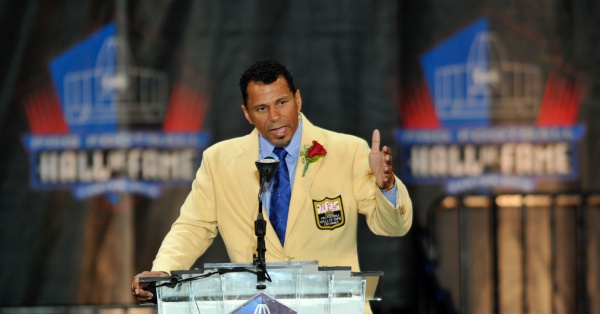Game Changer, Impact Player, Hall of Famer
2/27/2018
The National Football League Scouting Combine kicks off this week. The event draws virtually every scout, general manager and player personnel staff members. The ultimate goal is to find the one player from the more than 300 NFL prospects whose unique traits will one day lead them to Canton.
The Pittsburgh Steelers entered the 1987 NFL Draft looking to bolster its lineup. After reaching the AFC championship game in 1984, the team suffered two straight losing seasons, something rarely experienced by a Chuck Noll-led team that had been so dominant over the previous decade. The Steelers landed a top-10 pick in the draft based on its 6-10 finish in 1986. It marked two consecutive years Pittsburgh drafted within the first 10 selections.
After falling from sixth in total defense in 1985 to 18th in 1986, Noll determined it was time to rebuild his once proud defense. With five defensive players already off the board in the first nine picks, the Steelers were surprised who was still available when they were put on the clock.
One of the most versatile and all-around athletic players they had scouted was still on the board. That player was consensus All-American Rod Woodson from Purdue University. The Steelers were elated at the chance to pick the four-year starter who played cornerback, safety, running back and wide receiver while also returning kickoffs and punts for the Boilermakers.

Woodson, at 6-foot, 202 pounds, started 44 consecutive games and set 13 school records at Purdue. He totaled 320 solo tackles, 11 interceptions, three interceptions returned for touchdowns, 276 interception return yards, 71 kickoff returns and 1,535 kickoff return yards. In his final regular season college game, Woodson started at running back and rushed for 93 yards, caught three passes for 67 yards, made 10 tackles on defense, forced a fumble, returned two kickoffs for 46 yards, and returned three punts for 30 yards, while playing 137 snaps.
He had blazing speed — 4.29 seconds in the 40-yard dash — combined with great explosiveness and exceptional balance. Scouts loved his athleticism, and his work ethic. The unique traits he developed as a football player also helped him as a hurdler and sprinter at Purdue.
Initially there was some concern Woodson may not want to play in the NFL. Rather, there were whispers he’d forego the start of his pro football career for an opportunity to compete in the 1988 Olympic Games in track and field. Fortunately for the NFL and its fans, Woodson abandoned his Olympic training and joined the Steelers. Woodson’s primary goal was to be the NFL’s best cornerback.
“To play cornerback you have to be the best athlete on the field,” Woodson said. “You’re all by yourself against a wide receiver. You have to run backward, which isn’t natural, then turn and sprint as soon as the receiver makes his break, matching him stride for stride at top speed.
“If you want to be the best cornerback, you have to play like a linebacker, too. You have to take on pulling guards and tackles, and you must hit tight ends and running backs. Most cornerbacks, if they’re honest, will say, ‘I’m a cover guy. I don’t want to get involved in contact.’ You can’t be passive. If you don’t sell out on every play, you’ll come up a play or two short.”
Woodson’s Olympic ambitions and the inability to quickly come to contract terms with the Steelers limited him to seeing action in just eight games during his rookie season. Once he took the field, however, he made an immediate impact playing nickel cornerback and returning kicks. Woodson led the Steelers in both kickoff returns and punt returns as a rookie. He also had his first career interception, which he returned 45 yards for a touchdown against the Cincinnati Bengals.
By his third season, Woodson was highly regarded not only as an All-Pro return man but as one of the game’s finer cornerbacks. In 1994, he was voted to the NFL’s 75th Anniversary All-Time Team. Woodson was one of just five active players included on that team.
The Steelers’ adept scouting and drafting of Woodson paid huge dividends. His natural talent not only equated to impressive individual numbers for Woodson, but the team’s winning ways were restored. During the 10 seasons he played in Pittsburgh, the Steelers had winning records in all but two, made the postseason five times, won three divisional titles, and claimed one AFC championship. Woodson was enshrined into the Pro Football Hall of Fame in 2009.
Go back to all blog listings

